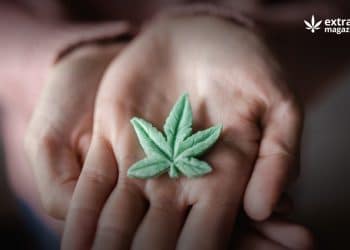The Food and Drug Laboratory branch of the California Department of Public Health studied what exactly is in cannabis vape oil liquid.
By Robert Hammell
Electronic nicotine delivery systems (ENDS) were first invented in Hong Kong in 2003. By 2006, they made it to the United States and Europe, and by 2012 they had exploded in popularity and were believed to be a healthier alternative to traditional cigarettes. The same was believed to be true with cannabis vaporizers, the ENDS equivalent, until August 2019 when there was a massive uptick in E-cigarette or Vaping product use Associated Lung Injuries (EVALI) that prompted investigations into the safety of vaping. During these investigations, the California Department of Public Health conducted the first study of its kind into what makes up the cannabis vape juice sold in California. [1] This is what they found.
Cannabinoids, Terpenes, Terpenoids, and Flavor
The study tested 12 brands of vape juice. Each one had various mixtures of cannabinoids, terpenes, terpenoids, and flavors added to the juice. These compounds are what provide the psychoactive effects and flavors, and each one was expected. The unexpected part came from which combinations of compounds were in each product. Some samples were advertised as having a calming effect, while others were promoted to be energizing based on their blend of cannabinoids and terpenes. When tested, the results included different combinations that could produce different psychoactive effects. In some cases, that meant additional compounds added from the initial variety of cannabis, and in other cases, the packaging labels didn’t match what was in the juice. The authors of the study seemed to credit this to branding and advertising and felt that it was not a major cause for concern.
VEA, MCT, and PEG
More concerning was the discovery of vitamin E acetate (VEA), medium chain triglycerides (MCT), and polyethylene glycol (PEG) in multiple samples. VEA and MCT work as thickeners for the vape juice, and PEG serves as a thinning agent when the product is vaporized. VEA and PEG have both been found in large quantities of EVALI patients. Because of this, many states have banned VEA in vaping products. PEG is not harmful when used in food, but when it’s vaporized, it produces large amounts of the toxic byproducts acetaldehyde and formaldehyde. MCT is also thought to be safe as a food additive in limited amounts, but the authors of the study concluded that there is not enough data to confirm whether it’s safe for the respiratory tract.
What does this all mean?
The study authors concluded that while there is a higher concentration of cannabinoids and terpenes consumed with each intake from a vaporizer, there is also the potential to intake harmful chemicals as well. This means that with fewer puffs, there may be less exposure to harmful chemical compounds than through traditional smoking. They also concluded that while there may be a correlation between VEA, MCT, and PEG and EVALI, that does not indicate a causation. They conclude that more studies should be conducted comparing vape juice to dried flower vaporizing to determine the true effects of any additives into the vape juice.
Reference
[1] Guo W, Vrdoljak G, Liao VC, Moezzi B. Major constituents of cannabis vape oil liquid, vapor and aerosol in California vape oil cartridge samples. Front Chem. 2021;9:694905. [journal impact factor = 5.221; times cited = 0]












